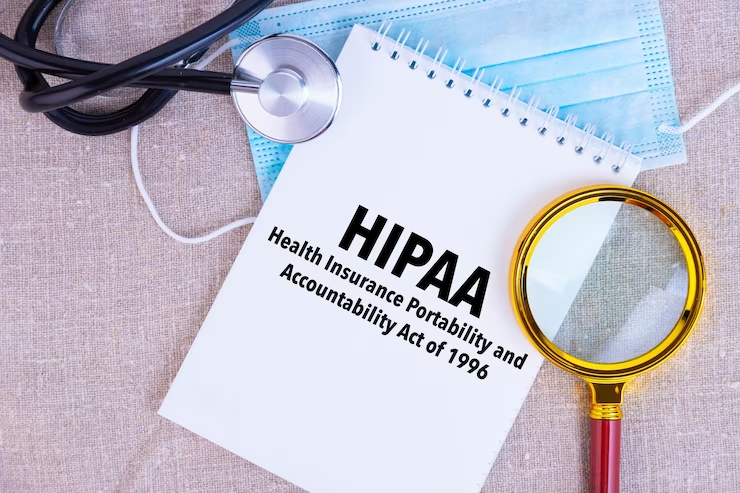What is HIPAA compliant billing? One of the topics we are asked the most; therefore, it’s crucial to clarify compliance.
The Health Insurance Portability and Accountability Act of 1996, or HIPAA, is a set of rules that specify. How protected health information may be used and disclosed legally (PHI). The Office for Civil Rights (OCR) and the Department of Health and Human Services (HHS) both enforce HIPAA compliance laws (OCR).
How do the HIPAA Rules Work?
Several HIPAA Rules make up the HIPAA compliance billing process. In the more than 20 years that have elapsed since HIPAA was initially implemented in 1996, all HIPAA Rules have been passed.
These are some of the HIPAA Rules that you should be aware of:
HIPAA Privacy Rule
The HIPAA Privacy Rule establishes federal guidelines for patients’ PHI rights. The HIPAA compliant billing only applies to covered entities, not business associates. HIPAA Privacy Rule includes several requirements, such as those relating to patients’ access rights to PHI, health care providers’ access rights to PHI, and the information that Use and Disclosure HIPAA release forms and Notices of Privacy Practices must contain, among others.
HIPAA Security Rule
The HIPAA Security Rule establishes federal requirements for the safe storage, processing, and transmission of ePHI. Due to the potential sharing of ePHI, both covered entities and business partners are subject to the HIPAA Security Rule. The Security Rule specifies requirements for the integrity and security of ePHI, including administrative, technical, and administrative measures that must be in place in every healthcare institution. HIPAA compliant billing Policies and Procedures for the organization must include documentation of the regulation’s specifics. Annual staff training on these policies and procedures is required, with attestation in writing.
HIPAA Breach Notification Rule
In the case of a data breach involving PHI or ePHI, covered entities and business partners are required to comply with a set of rules known as the HIPAA Breach Notification Rule. Depending on the scale and severity of the breach, the Rule specifies various breach reporting obligations. Regardless of their size, breaches must be reported to HHS OCR by organizations, although the particular reporting procedures vary depending on the nature of the breach. The sections below go over the specifics of the HIPAA Breach Notification Rule.
What constitutes the HIPAA compliance billing process program’s seven components?
The Seven Elements of an Effective Compliance Program were developed by the HHS Office of Inspector General (OIG) to provide firms with direction as they evaluate compliance solutions or design their compliance programs.
These are the bare essentials that a successful compliance program must include. An efficient compliance program must be able to manage each of the Seven Elements in addition to meeting the entirety of the necessary HIPAA Privacy and Security criteria.
The following are the Seven Elements of an Effective Compliance Program:
- Putting into practice specified norms of behavior, policies, and procedures.
- Establishing a compliance committee and officer.
- Conducting efficient education and training.
- Establishing efficient communication channels.
- Carrying out internal audits and monitoring.
- Enforcing norms via widely known disciplinary procedures.
- Taking immediate corrective action after being informed of an offense.
- Federal HIPAA auditors will assess the efficiency of your organization’s compliance.
- Program during a HIPAA investigation conducted by OCR in response to a HIPAA violation by comparing it to the Seven Elements.
Whether you realize it or not, you’re already familiar with many of HIPAA’s regulations. The uniformity of the medical codes used by coders and billers is one of HIPAA’s most immediately noticeable effects.
HIPAA compliant billing standardized the use of ICD codes for diagnosis and CPT and HCPCS codes for procedural reporting, as we covered in the last course. In order to create claims for medical billing, we employ these codes daily.
Electronic Medical Transactions
Electronic medical transactions are established and managed by HIPAA. All providers and billers covered by Title II of HIPAA must submit claims electronically in the approved manner. The name of this format is ASC X12 005010. This form may also be referred to by its abbreviation, “HIPAA 5010.”
It’s critical to keep in mind that HIPAA 5010 focuses more on the transfer of information than the style of a claim. HIPAA 5010 transactions can be compared to standardized automobiles. Although they must all have the same appearance, each vehicle may transport various passengers in various configurations.
Each type of transaction has its code set number within ASC X12 005010. Now let’s take a closer look at these code set numbers and the kinds of transactions they relate to. You’ll notice that there is an “X12” before each code set number. This is to notify you that the ASC X12 keeps an eye on and maintains the code set. Every transaction adopts a specific Electronic Data Interchange format (EDI).
All of these transaction forms has its own set of guidelines and formats. We’ve concentrated on the health care claim (the first code set number given below) for simplicity’s sake, and we’ll keep doing so for the remaining courses.
Code Sets For HIPAA Forms and their HIPAA Compliant Billing
X12 837 is the Code Set Number
The health care claim is the most fundamental and typical electronic medical transaction.
Billers submit claims to obtain payment on the providers’ behalf. Claims contain codes for the treatment and diagnosis and details about the patient, the provider, and the patient’s health insurance plan.
Medical billers must utilize the proper type of EDI to carry out a certain billing operation, much as medical coders must use the proper code set to describe a treatment or diagnosis.
As you can see, practically every part of the medical billing process is impacted by HIPAA, from the way records are kept, and accessible to the way codes are applied when generating claims.

